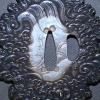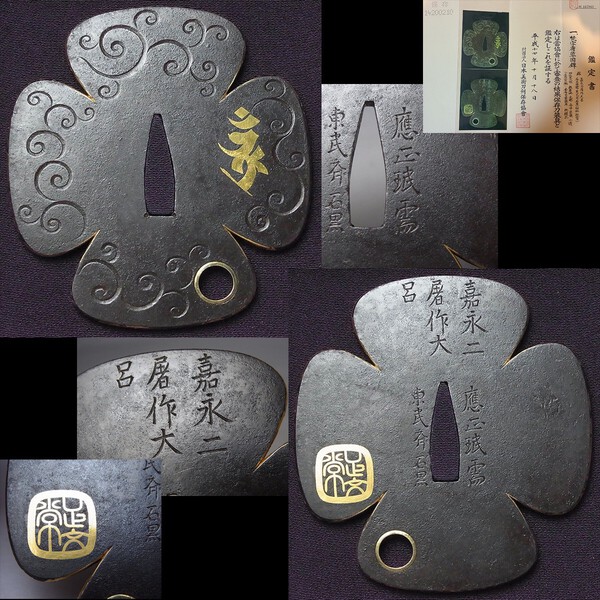-
Posts
761 -
Joined
-
Last visited
-
Days Won
5
Content Type
Profiles
Forums
Events
Store
Downloads
Gallery
Posts posted by Katsujinken
-
-
That nakago looks like it was made yesterday using modern tools and half-heartedly aged.
Please, don’t waste your money on “punts.”Buy some books. Watch some of the many documentaries on YouTube. If there’s a sword club in your area, join up. It’ll be worth it!
-
 5
5
-
-
Horse farts! Never a dull moment on the NMB!
-
 2
2
-
-
Pretty sure the .ru domain tells you everything you need to know here…
-
 3
3
-
-
It’s true a top heavy / tip heavy sword makes cutting easier. However such a blade is difficult to move and fight with, especially if there are multiple targets. Extra wide and thin blades are also easier to cut with, but are equally unrealistic.
Over time as tameshigiri has grown in popularity and taken on more aspects of “sport” the same has happened to the equipment: in other words “optimizations” have appeared that have little to do with the true principles underlying the practice. In my personal opinion most tameshigiri practice today has more in common with golf or juggling than with budo, which is unfortunate. In my dojo we try to develop our skills without losing that connection.
Nakamura Taisaburo, who should be well known to any practitioner, wrote about this extensively, and that was decades ago.
-
 1
1
-
-
The last fellow is from Fukushima. He’s fantastically skilled, including with a sword that is not a ridiculous abomination like the one he’s using here.
This cutting challenge is called yoko narabi.
It’s an impressive feat to develop, but it is not budo (especially with a sword like that).
-
Steve, you're a hero as always!
-
Hi folks,
I'm helping a friend with some research and was wondering if anyone is familiar with a smith named Ohno who would have worked out of Gifu/Seki in the mid to late 20th century. I'm not sure if that's his real name or swordsmith name. Sato Shigetoshi, currently working in Hachioji, was one of his students.
I know that's not a lot to go on so I appreciate any help!
Thanks,
Michael
-
I’ll take it. PM sent!
-
The shinsa operate on a schedule which may or may not align with the dates of your trip. Either way you will need to go through the import process to get the blades in the country (and then export to get them back home), which is best handled by an agent who specializes in these matters. The truth is your best bet is to probably plan on shipping the blades and enjoy your trip free of this complication. Other members on the board will be able to recommend agents who can help you. Best of luck and enjoy your trip!
-
 2
2
-
-
-
Can anyone help me identify the bonji on this tsuba? I’m having trouble matching it to any of my references.
https://page.auction.../auction/v1114042389
Thanks!
-
For collectors of movie and prop memorabilia it’s the fact that something was used on screen that makes it special.
Different strokes for different folks.
-
 1
1
-
 1
1
-
-
It’s also short and a bit tired.
-
 1
1
-
-
Lots of great advice in this thread.
I do not think Samurai Museum’s prices are ever competitive, and I would not look there for a Juyo piece.
As others have said, above $30k you have lots of great options. Since you’re in California I suggest you look up Mike Yamasaki of Tetsugendo. He will not steer you wrong in pursuit of a Juyo sword at a fair price.
-
 3
3
-
-
-
On 8/31/2023 at 8:14 AM, Gakusee said:
May I please check that you have held the Kokuho meito O-Kanehira and not just a sword by Ko-Bizen Kanehira? Would that have been at the NBTHK convention?
I have only seen the O-Kanehira behind glass (during the 150th anniversary of the national museum last year). The same applies to KoRyu, which was also displayed there….
No, not the kokuho AFAIK. This was in a shop just before DTI. -
Three way tie between an O-Kanehira, Masamune, and a Sanjo verifiably owned by Toyotomi Hideyoshi. All studied at the same time on the same day in Tokyo!
-
 2
2
-
-
Once on a tripod you could close down the aperture a bit into the zone where the lens is sharpest (maybe f/8?) and go for a longer exposure at a lower ISO for maximum quality.
Shooting in RAW I assume?
Fun!
-
 1
1
-
 1
1
-
-
If this blade were going to go TokuJu, I think it would be there already.
Part of the reason it is not there (and the price is what it is) in my humble opinion is the length.
That doesn’t mean it’s not wonderful. Just know what you’re buying.
-
 4
4
-
-
I suspect if the NBTHK felt strongly about a generation they would have specified one given the implications of an attribution to the first or second generation. This is perhaps why the original seller pointed to the third generation. That said, I haven’t examined the mei in detail.
-
29 minutes ago, Jacques D. said:
I would love to know why these rankings are relative and inexact.
Okay, Jacques, I’ll bite despite your usual latent sarcasm. :-Pit’s really quite simple, especially for a less experienced collector. These rankings refer to the overall work of a given smith and are also to an extent a product of the time in which they were promulgated. They do not necessarily speak to a specific blade in question. This speaks to my very first piece of advice in the other thread, which is of course, to always buy the blade and not the papers. And as we all know, in order to do this one must educate oneself via books, and seeing swords in person, and learning from experienced luminaries such as yourself.
-
 1
1
-
 1
1
-
-
The SHODAI and NIDAI (1st and 2nd generation) Yoshimasa were ranked Jo Saku by Fujishiro. As I mentioned in your other thread, the 3rd generation is ranked chu saku, the "lowest" rank given by Fujishiro. This aligns with the other rankings you have noted and with the price you paid. But again please understand these "rankings" are relative and inexact and not a shortcut to placing blades in context. To truly understand requires lots of time with books and swords in hand. Welcome to the rabbit hole!
-
1 hour ago, Jussi Ekholm said:
These being roughly equal in price? I would then go for Yoshimasa with this amount of information.
Agreed. -
First, the age old adage: “buy the blade not the papers.”
You would be better served posting more photos of the blades and the prices, if you are willing.
At a glance the smiths are comparable generally in terms of relative prestige.
The Morokage smiths in Fujishiro are ranked chusaku or chujosaku, nothing special so to speak. This is the oldest blade, but it is quite short for a katana.
Yoshimasa is ranked chusaku by Fujishiro. This blade is younger but is a nice length, and it’s signed, which is a plus for a Shinto blade.
Taira Takada is a broad school level attribution by the NBTHK, and a mumei wakizashi is generally going to be of lower value.
NBTHK papers are always better than other papers in my opinion.
-
 2
2
-




Newbie looking at Samurai Museum
in General Nihonto Related Discussion
Posted
I haven’t even clicked the link and I can tell based on this thread that Jacques is correct.
That price is hilarious.